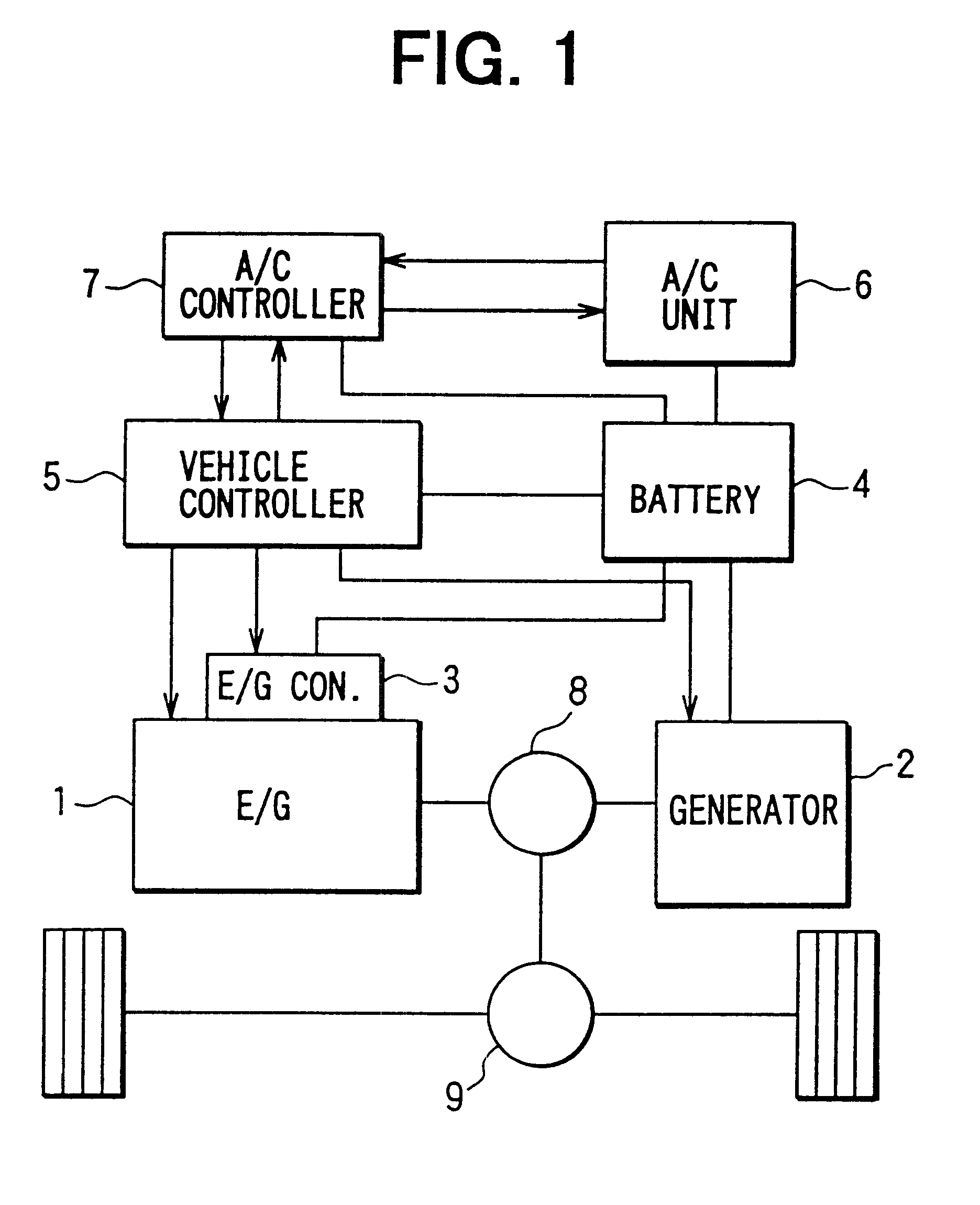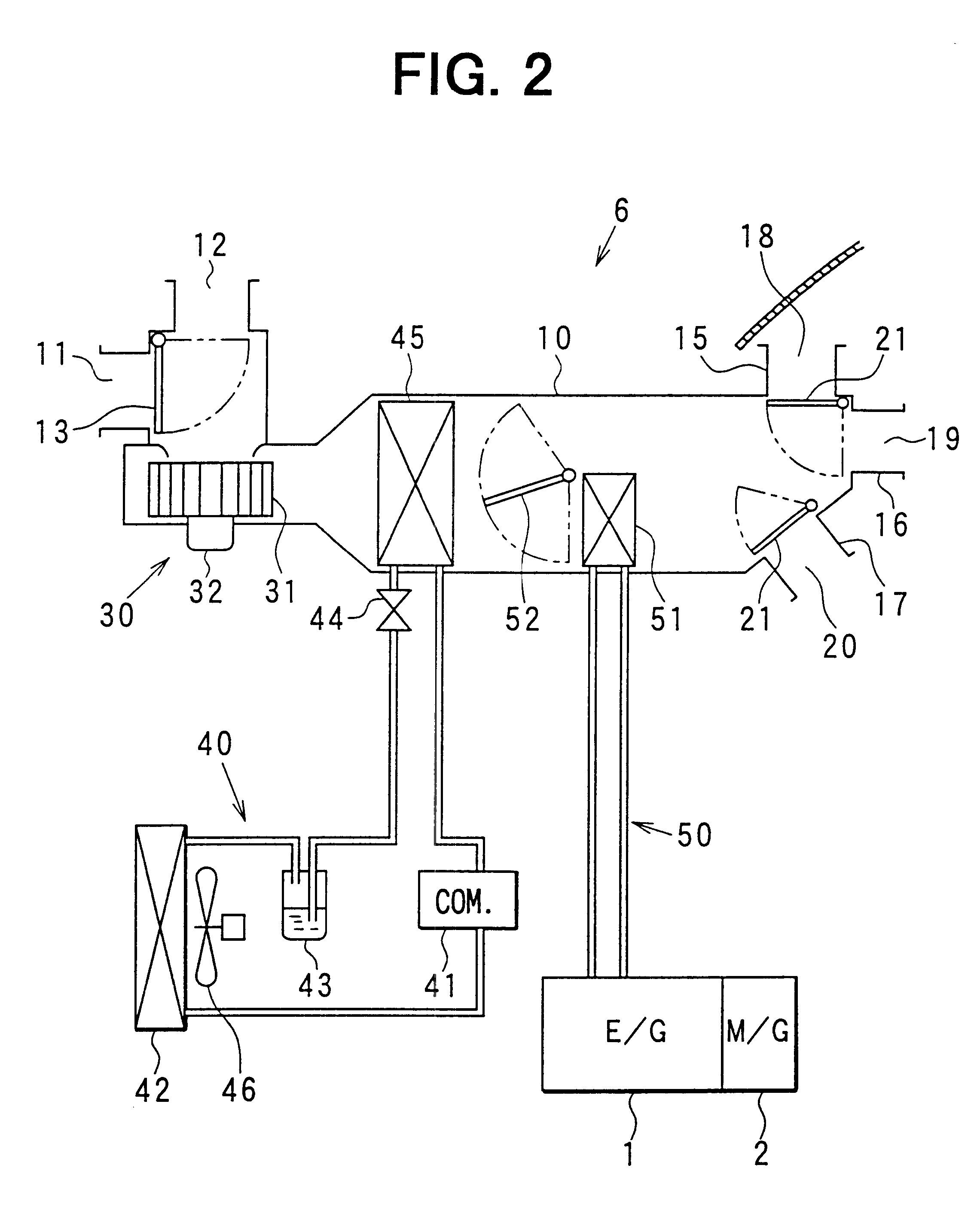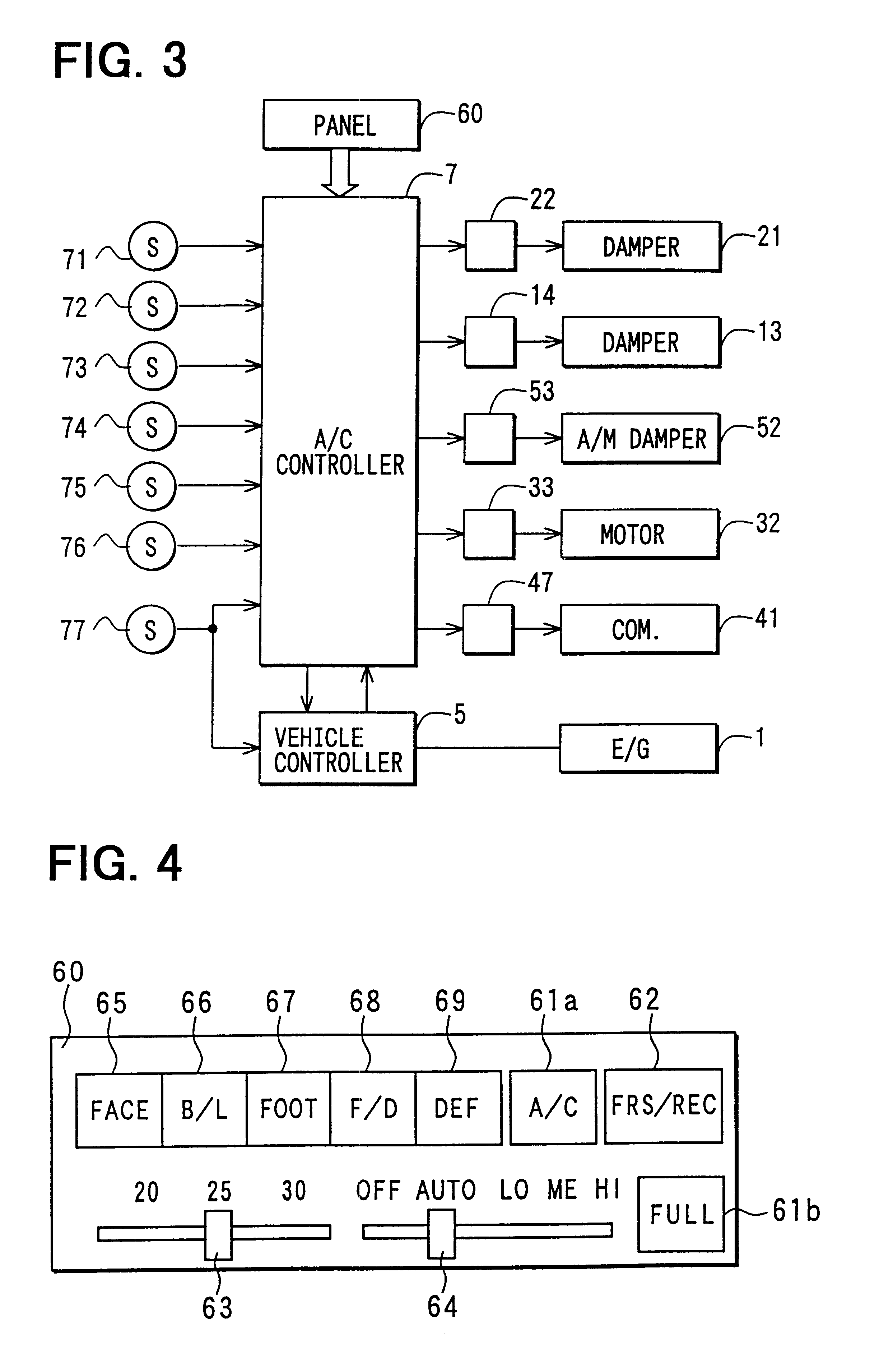Air conditioner for hybrid vehicle
a hybrid vehicle and air conditioner technology, applied in hybrid vehicles, electrochemical generators, transportation and packaging, etc., can solve the problem of insufficient improvement of fuel consumption efficiency
- Summary
- Abstract
- Description
- Claims
- Application Information
AI Technical Summary
Benefits of technology
Problems solved by technology
Method used
Image
Examples
first embodiment
the present invention will be now described with reference to FIGS. 1-7. As shown in FIG. 1, a hybrid vehicle includes an internal combustion engine 1 using gasoline as a fuel, an electrical motor generator 2, an engine controller 3, a battery (e.g., nickel-hydrogen storage battery) 4 and a vehicle controller 5.
The electrical motor generator 2 has an electrical motor function for running the hybrid vehicle and a power generator function for generating electrical power. That is, when electrical power is supplied to the electrical motor generator 2 from the battery 4, the electrical motor generator 2 is operated as an electrical motor for generating motive power. On the other hand, when the electrical motor generator 2 is driven by the engine 1 or the like, the electrical motor generator 2 is operated as a power generator for generating electrical power.
The engine controller 3 suitably controls an amount of fuel supplied to the engine 1, an ignition timing and the like based on contro...
second embodiment
A second embodiment will be described with reference to FIG. 8. In the second embodiment, a part of the control processes (refer to FIG. 7), related to the air-conditioning control in the vehicle controller 5 of the first embodiment, is changed. However, the other parts are similar to those of the above-described first embodiment. The present invention is also applied to the hybrid vehicle. In the hybrid vehicle, the engine 1 is stopped while the vehicle is stopped, and the engine 1 is controlled to be driven and stopped according to a running condition (mainly, vehicle speed and running load) while the vehicle runs.
As shown in FIG. 8, at step S810, the initial setting is performed. Thereafter, at step S811, the vehicle speed, the charging state of the battery 4 and the pedaled amount of an accelerator pedal are calculated, and the air-conditioning necessary electrical power NEP of the air conditioning unit 6 is inputted to the air-conditioning controller 7. At step S812, it is det...
third embodiment
the present invention will be described with reference to FIG. 9. In the third embodiment, a part of the control processes (refer to FIG. 7), related to the air-conditioning control of the vehicle controller 5 in the first embodiment, is changed, but the other part thereof is not changed. The present invention according to the third embodiment is also applied to the hybrid vehicle.
AS shown in FIG. 9, at step S820, the initial setting is performed. Thereafter, at step S821, the vehicle speed, the residual charging degree of the battery 4, a discharging current from the battery 4, and the pedaled amount of the accelerator pedal are input, and the air-conditioning necessary electrical power NEP of the air conditioning unit 6 is inputted. At step S822, the target degree of the battery 4 is calculated based on the air-conditioning necessary electrical power NEP and the discharging current of the battery 4. When the discharging current is large, the target degree is set at 30%, as indicat...
PUM
| Property | Measurement | Unit |
|---|---|---|
| temperature | aaaaa | aaaaa |
| temperature | aaaaa | aaaaa |
| electrical power | aaaaa | aaaaa |
Abstract
Description
Claims
Application Information
 Login to View More
Login to View More - R&D
- Intellectual Property
- Life Sciences
- Materials
- Tech Scout
- Unparalleled Data Quality
- Higher Quality Content
- 60% Fewer Hallucinations
Browse by: Latest US Patents, China's latest patents, Technical Efficacy Thesaurus, Application Domain, Technology Topic, Popular Technical Reports.
© 2025 PatSnap. All rights reserved.Legal|Privacy policy|Modern Slavery Act Transparency Statement|Sitemap|About US| Contact US: help@patsnap.com



